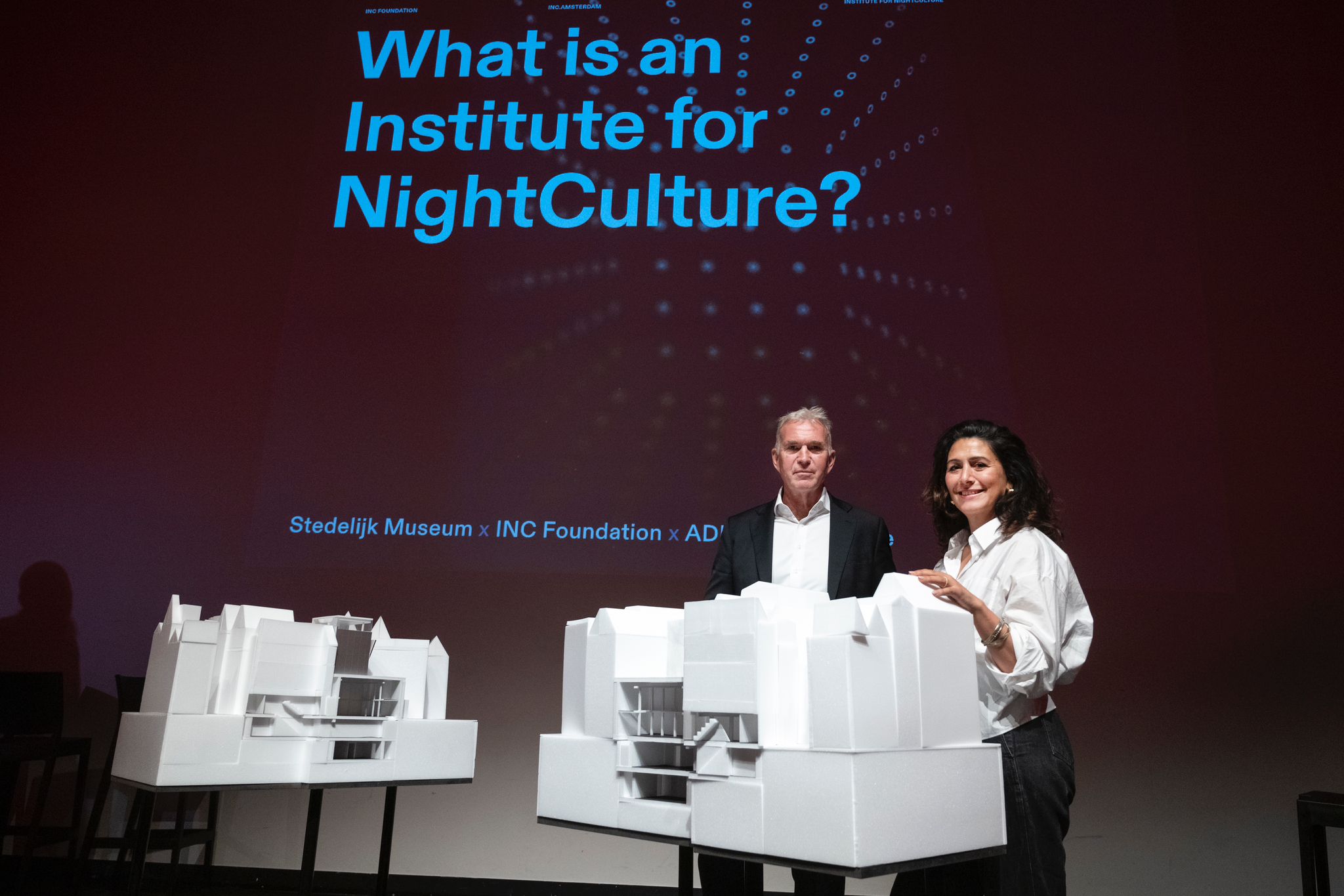Half moon alley to bloom into “institute for night culture” club
Senay Boztas
A run-of-the-mill historic Amsterdam street is about to open up into something far more exciting.
At a symposium at the Stedelijk Museum on Wednesday, nightlife enthusiasts announced plans for a 26-metre high building with three rooms to house 650 people and 1,000 sq metres of freedom and fun: a new institute for night culture. It will be built in the centre of the city, behind and underneath Unesco-listed buildings on the Amstel, on the appropriately named Halvemaansteeg (“half moon alley”).
“It’s a little bit like a rabbit hole in the 17th century courtyard that becomes this hidden place, this underworld where all kinds of people with all kinds of disciplines hopefully will meet,” said architect David Mulder van der Vegt.
Plans to redevelop the building have been ongoing for a decade, but it has now become the chosen site of an official institute for night culture (INC) – a cheap, safe and open space for up-and-coming young artists, musicians and performers who are being squeezed out of the commercialised Dutch capital.
It comes under the umbrella of a €2.2 million plan by Amsterdam municipality to boost a “vibrant night culture” which is under pressure “due to the growth of the city and an increasing lack of space” plus the struggle for artists to stay afloat.
Mulder, co-founder of XML architects, presented his plans and a maquette for the building at an event to launch the Institute for Night Culture Foundation and and a book of ideas on its future. The site is being cleared, a café should open in late 2025 and the whole complex will follow in 2027.
“We are making this intervention in an existing building block: there is a historic periphery, but then in the centre we do a sort of open heart operation with a future-gazing heart,” he said.
“Mostly clubs are existing buildings that you appropriate as a club, but here we build to accommodate everything that is necessary in terms of sound, absorption, isolation, queue management, safety. So for us what was a very interesting question is how you could make a building that has the same capacity to be appropriated by its users over time…a building that is not finished, although it will be open one day.”
Cheap, safe, inclusive
The project has had a €50,000 subsidy from Amsterdam city council and has the backing of deputy mayor Touria Meliani, who was present at the launch. The initiators were former RoXY director Michiel Kleiss, Jordi Ariza Gallego, who runs “art house” Sexyland World and Mulder. Kleiss said: “Amsterdam is so beautiful, so rich and so over-regulated that it takes 10 years to get a permit to build this and create artificially a place that is cheap, safe and inclusive,” he said. “That is what we are doing.”
Speakers at the event said that price inflation, property speculation and gentrification meant these things were disappearing. Sven Bijma, of Club Raum, a queer club which struggled for months to get permission to open, said: “The city has changed so much, I call it a neoliberal hellhole.
“Let’s be real: it’s an extremely expensive city and hit’s harder and harder for people to live in. Young people are driven out after they graduate. Artists move out to Berlin. There’s not much here in Amsterdam to stay for.”
Night is the child
Meliani initially doubted whether an institution could improve access to the kind of free and open nightlife that characterised Amsterdam 20 years ago, but decided that it could provide some important sparks.
“When you talk about night culture you don’t talk about institutions,” she said. “But we are in a time when everything’s getting more difficult…to get an affordable place to start a club. It’s less diverse and more of a monoculture. We see that’s dangerous for night culture…But ‘the night is the child’, and things start in the night.”
The initiative was launched during Amsterdam Dance Event, an annual clubbing festival and music industry conference.
Thank you for donating to DutchNews.nl.
We could not provide the Dutch News service, and keep it free of charge, without the generous support of our readers. Your donations allow us to report on issues you tell us matter, and provide you with a summary of the most important Dutch news each day.
Make a donation